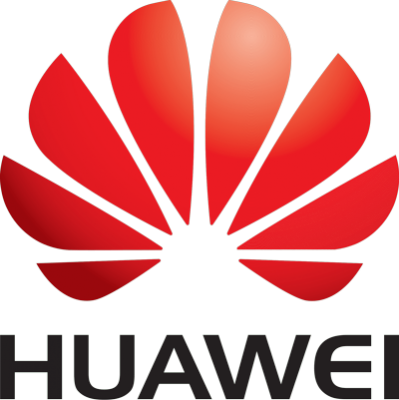| June 7 13:00-14:00 Dublin time, Keynote I by Prof. Athina Petropulu |
| June 7 14:00-15:00 Dublin time, Keynote II by Prof. Robert W. Heath Jr. |
| June 7 15:00-16:00 Dublin time, Panel discussion |
Zoom Link: https://zoom.us/j/96744993900
Keynote I:
Title: On Spectrum Sharing Between MIMO Radar and MIMO Communication Systems
Abstract: Spectrum congestion in commercial wireless communications is a growing problem as high-data-rate applications become prevalent. On the other hand, frequency bands earmarked for exclusive use by radar are underutilized. Spectrum sharing is a new line of work that aims to enable radar and communication systems to share the same frequency bands efficiently by managing interference.
In the first part of the talk we present our recent work on a cooperative spectrum sharing framework for the coexistence of a MIMO radar and a MIMO wireless communication system. Radar transmit precoding and adaptive communication transmission are adopted, and are jointly designed to maximize signal-to-interference-plus-noise ratio (SINR) at the radar receiver subject to the communication system meeting certain rate and power constraints. Compared to non-cooperative approaches in the literature, our approach has the potential to improve the spectrum utilization because it introduces more degrees of freedom. We focus on a special case of MIMO radar, namely the matrix completion based MIMO radar (MIMO-MC), which perform sub-Nyquist rate sampling of the received signals and then recovers the missing samples via matrix completion. In addition to reducing the amount of data required, MIMO-MC radar offer a significant advantage for spectrum sharing. The advantage stems from the way the sub-sampling scheme at the radar receivers modulates the interference channel from the communication system transmitters, rendering it symbol dependent and reducing its row space. This makes it easier for the communication system to design its waveforms in an adaptive fashion so that it minimizes the interference to the radar subject to meeting rate and power constraints.
In the second part of the talk, we present our current work on another form of spectrum sharing along the lines of dual functional radar communication systems (DFRC). In DFRC systems communication information is conveyed by the radar probing signals, thus there is no interference between radar and communication functionalities. We present a novel DFRC system, consisting of a sparse MIMO radar whose active antennas transmit orthogonal frequency division multiplexing (OFDM) waveforms. The system communicates information via the transmitted data symbols and also via the pattern of active transmit antennas in a generalized spatial modulation (GSM) fashion. Unlike existing literature, the active antennas use most OFDM subcarriers in a shared fashion and only one in an exclusive fashion (private subcarrier). The shared subcarriers among antennas enable high communication rate. The private subcarriers facilitate the construction of a virtual array for higher angular resolution, and also the recovery of the active transmit antenna indices. The OFDM waveforms allow both systems to easily mitigate the effect of frequency selective fading.
Keynote Speaker: Athina P. Petropulu is Distinguished Professor at the Electrical and Computer Engineering (ECE) Department at Rutgers, having served as chair of the department during 2010-2016. Prior to joining Rutgers she was a Professor of ECE at Drexel University (1992-2010). She held Visiting Scholar appointments at SUPELEC, Universite'Paris Sud, Princeton University and University of Southern California. Dr. Petropulu's research interests span the area of statistical signal processing, wireless communications, signal processing in networking, physical layer security, and radar signal processing. Her research has been funded by various government industry sponsors including the National Science Foundation (NSF), the Office of Naval research, the US Army, the National Institute of Health, the Whitaker Foundation, Lockheed Martin and Raytheon.
Dr. Petropulu is Fellow of IEEE and AAAS and recipient of the 1995 Presidential Faculty Fellow Award given by NSF and the White House. She is President-Elect for the IEEE Signal Processing Society for 2020-2021, and in the past, has served as Editor-in-Chief of the IEEE Transactions on Signal Processing (2009-2011) and IEEE Signal Processing Society Vice President-Conferences (2006-2008). She was the General Chair of the 2005 International Conference on Acoustics Speech and Signal Processing (ICASSP-05), Philadelphia PA, and is General Co-Chair of the 2018 IEEE International Workshop on Signal Processing Advances in Wireless Communications (SPAWC). She is recipient of the 2005 IEEE Signal Processing Magazine Best Paper Award, and the 2012 IEEE Signal Processing Society Meritorious Service Award. She was Distinguished Lecturer for the Signal Processing Society for 2017-2018, and is currently Distinguished Lecturer for the IEEE Aerospace & Electronics Systems Society.
Keynote II:
Title: Millimeter-Wave Joint Communication-Radar: Theory, Experiments, and Applications
Abstract: Millimeter-wave communications and radars are key technologies for many demanding applications, such as autonomous driving and smart connected devices. The combination of these two technologies into a single joint communication-radar enables hardware reuse and a common signaling waveform that provides benefits in power consumption, spectrum efficiency, and market penetrability. Millimeter-wave joint communication-radar, however, faces challenges in terms of waveform and beamforming design techniques along with the need for experimental evaluation. This presentation first covers an IEEE 802.11ad WLAN-based radar, which provides a good baseline for designing a future vehicular and portable device standard. Then, advanced adaptive joint communication-radar designs are discussed that either modify the WLAN-based radar or use novel fully-digital MIMO techniques to achieve improved radar performance at the cost of a small reduction in the communication rate. Lastly, a low-complexity proof-of-concept development is presented for a fully-digital MIMO joint communication-radar at 71-76 GHz band with 2 GHz bandwidth.
Keynote Speaker: Robert W. Heath Jr. received the Ph.D. in EE from Stanford University. He is a Cullen Trust for Higher Education Endowed Professor in the Department of Electrical and Computer Engineering at The University of Texas at Austin and a Member of the Wireless Networking and Communications Group. He is also the President and CEO of MIMO Wireless Inc and Chief Innovation Officer at Kuma Signals LLC. He authored "Introduction to Wireless Digital Communication” (Prentice Hall in 2017). He co-authored “Millimeter Wave Wireless Communications” (Prentice Hall in 2014) and Foundations of MIMO Communications (Cambridge 2019).
Dr. Heath co-authored a number of award winning conference and journal papers including recently the 2014 EURASIP Journal on Advances in Signal Processing best paper award, the 2014 and 2017 Journal of Communications and Networks best paper awards, the 2016 IEEE Communications Society Fred W. Ellersick Prize, and the 2016 IEEE Communications and Information Theory Societies Joint Paper Award, the 2017 Marconi Prize Paper Award, and the 2019 IEEE Communications Society Stephen O. Rice Prize.
He received the 2017 EURASIP Technical Achievement award and is co-recipient of the 2019 IEEE Kiyo Tomiyasu Award.. He was a distinguished lecturer in the IEEE Signal Processing Society and is a Highly Cited Researcher. He was an elected member of the Board of Governors for the IEEE Signal Processing Society. He is a licensed Amateur Radio Operator, a registered Professional Engineer in Texas, a Fellow of the National Academy of Inventors, and a Fellow of the IEEE.




.png%3Fitok=tRZd6hUQ)
.png%3Fitok=i1NV_JCh)


